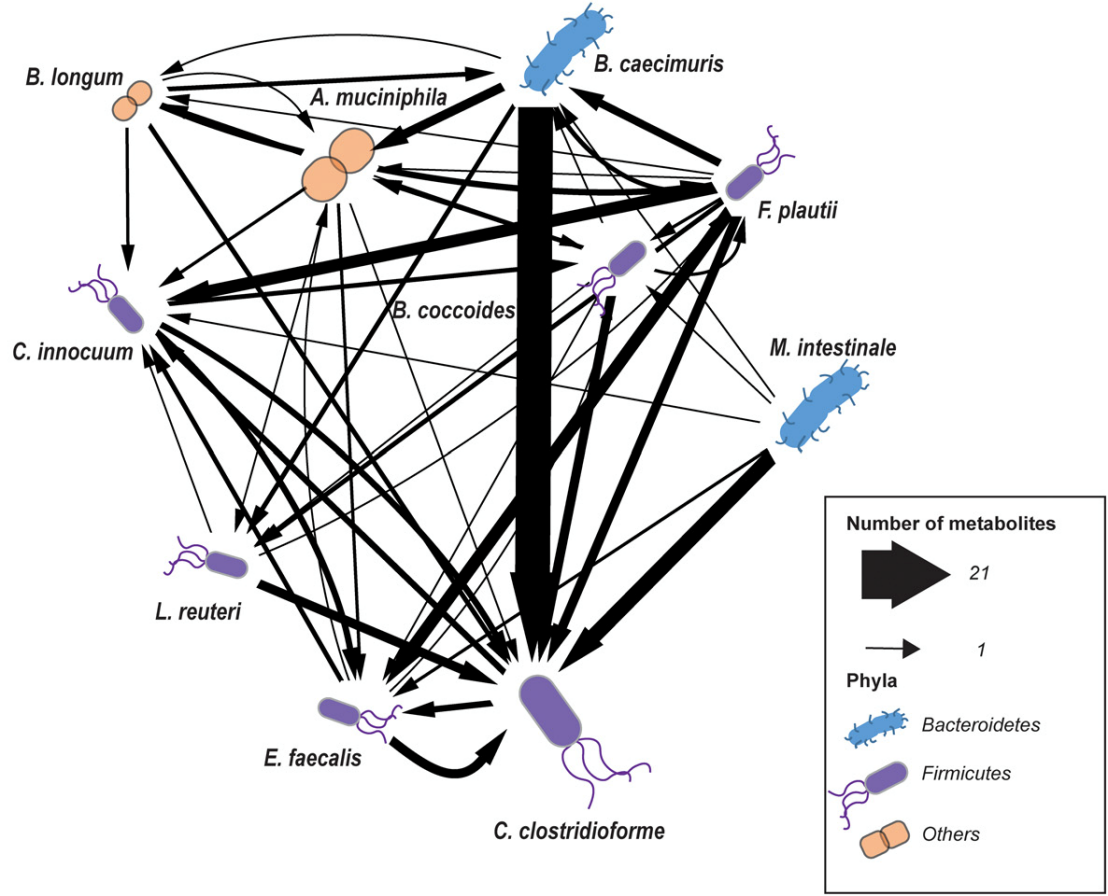Distinct N and C Cross-Feeding Networks in a Synthetic Mouse Gut Consortium
A recent “mSystems” paper by the Sauer group (IMSB) unravels with metabolomics the cross-feeding network in a 10 species mouse gut consortium and demonstrates how it is tailored to produce the anti-inflammatory butyrate.

The complex interactions between gut microbiome and host or pathogen colonization resistance cannot solely be understood from community composition. Missing are causal relationships such as metabolic interactions among species to better understand what shapes the microbiome. This article focuses on metabolic niches generated and occupied by the Oligo-Mouse-Microbiota consortium, a synthetic community that is increasingly used as a model for the mouse gut microbiome. Combining metabolomics with in vitro cultivations, two dense networks of carbon and nitrogen exchange are described. Rather than competing with each other, the vast majority of the about 100 interactions are surprisingly synergistic in nature- Cross-fed metabolites were mainly carboxylic acids, amino acids, and the so far not reported nucleobases. In particular the dicarboxylic acids malate and fumarate provided a strong physiological benefit to consumers, presumably as anaerobic electron acceptors. These networks lay the ground work towards understanding gut community dynamics and host-gut microbe interactions.
Link to the paper in external page "mSystems"